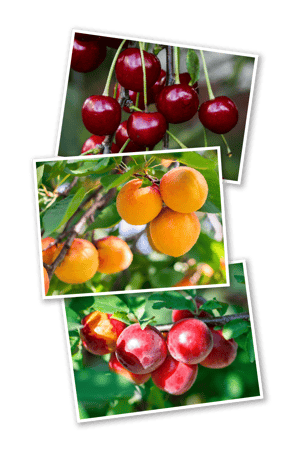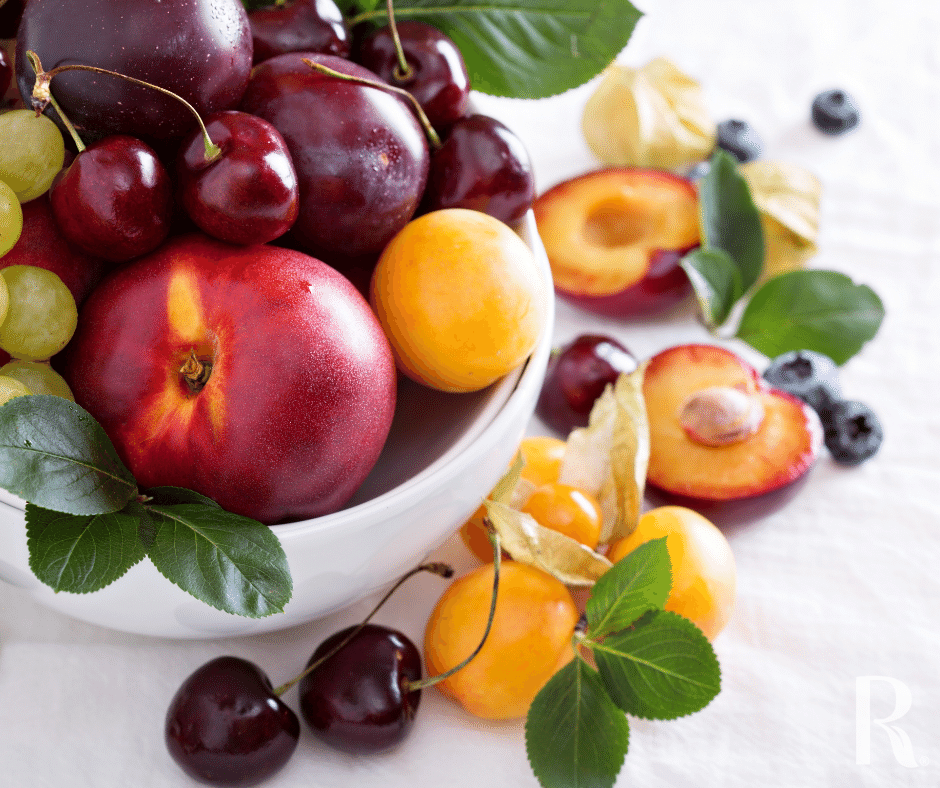With the passing of summer, one starts to miss the abundance of stone fruit at the ready to be purchased and consumed. So why not plant your stone fruit tree or two for future harvests of your own?
Now that the heat has started to dissipate, and stone fruit trees are becoming deciduous and will be dormant as we head into winter, it makes autumn truly one of the best times of year to plant.
Stone Fruit Overview:
- Quick growing, deciduous, small trees
- Fruit in 2-3 years
- Planting time: autumn/winter is best, but you can plant all year round
- Height 2-4m
- Full sun
- Climate: cool to subtropical
- Soil: most soil types with a pH of 6-7
- Prune winter
 Varieties:
Varieties:
Nectarine, Peach, Plum, Apricot and Cherries.
The varieties and cultivars you can grow will depend on what climatic zone you are living in. For example, cherries and apricots will only happily grow and bear fruit in cold climates.
This is because they require long chilling hours. You often see for sale “low chill” stone fruit, and these are the best ones to grow in subtropical climates.
Low chill and High chill – what does this mean?
Some varieties and types of stone fruit require a certain number of hours below 7 degrees. For example: Cherries on average require 800-1000 hours below 7 degrees, whereas low chill peaches and nectarines are far less at around 50-450 hours below 7 degrees depending on variety.
Pollination: Some will be self-pollinating, and some varieties will need cross pollination (plums in particular). Most peaches and nectarines are self-pollinating, and you only require one tree. Check with your local garden centre at the time of purchase.
Soil: High in organic matter, use Rocky Point ActivGrow Soil Improver and Cow Manure Plus at planting.
Fertiliser: Fertilising should be carried out throughout the growing season; applications of Rocky Point pelletised fertilisers should be applied after fruit harvest and again in summer and early autumn.
Pruning: Pruning needs to be done in winter when the trees are at their most dormant. Remove any diseased or damaged and spindly inwards growing branches. If you are trying to keep the height of the trees down for ease of harvest and care, now is the time to do that also.
Pest and disease: Keep an eye out for fungal issues such as leaf curl and rust and use an organic or copper-based spray to control. Remove diseased foliage that has dropped to the ground during dormancy.
Qld fruit fly needs to be controlled during fruit set and development. Use a combination of fruit traps, exclusion bags and or yeast-based lure sprays. Check in with your local garden centre for advice.
Looking for more great gardening info like this? Subscribe to the Better Earth Program to receive Better Earth Secrets Magazine direct to your inbox each season.
_MEB.png?width=842&height=596&name=RP_HorizontalColour(R)_MEB.png)



